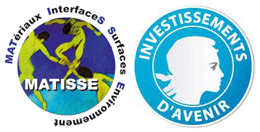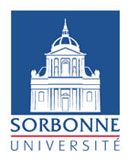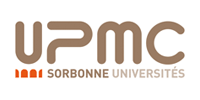Partners
This biomineralization short courses is organized thanks the support of CNRS and MATISSE Laboratory of Excellence.
Who is MATISSE
The MATISSE LabEx aims to unlock the deep principles of matter organisation and to create new materials with extraordinary properties. This is the first study of the natural/synthetic duality of materials through the combined perspectives of chemistry, physics and geosciences. This original approach will lead to a better understanding and mastery of materials in the environment (e.g. alteration, biodegration, contamination) and materials for the environment (e.g. depollution, green catalysts, natural resource management).
MATISSE’s combined expertise of chemistry, physics and geosciences brings totally new perspectives on the underlying structures of natural materials and their surface properties. This is central to protecting our national heritage, where protecting and restoring ageing materials is a constant and highly technical process.
The complex structures of natural materials are also our inspiration for new materials. Beyond fundamental research, new materials will target specific societal needs in the fields of energy (catalysis, fuel cells, electronics ...), health (biomaterials, biosensors...), environment (green catalysis, depollution), and cultural heritage (alteration and conservation).
MATISSE has particularly impressive strengths in the breadth of the partner skill sets in the key areas needed: the elaboration, characterisation in extreme conditions, the meticulous study of physical and chemical properties, and the modelling of an incredible variety of materials in terms of composition, dimensions and functions. This is also the only characterisation platform in France that includes equipment from such a diverse set of research units, and therefore capable of producing the extreme conditions in terms of pressure and temperature, plus the elaboration techniques required for material synthesis.
Three EquipEx projects, EMPARIS, APPESLAB and NANOSPEC, reinforces MATISSE’s potential even further. Industry relations are particularly important for this LabEx, given the anticipated creation of new materials and expert knowledge, and MATISSE is particularly well placed to excel in this area. Fully three-quarters of the participating laboratories will apply for Carnot Institute status because of their numerous close partnerships with a wide range of in dustries. The LabEx is also assisting the government’s cultural agencies with preservation techniques by sharing advances in the treatment of ageing materials.
Presentations and seminars for the general public are planned at its partner units UPMC and MNHN, whose large mineralogical collections are not only important research resources, but also perfect settings to communicate the exciting progress beingmade in material sciences. Master’s and doctoral candidates training at this LabEx are from UPMC international programs that are particularly aligned with this multi-disciplinary approach. As MATISSE research laboratories regularly work in public-private partnerships, these same students will also be a recruitment resource for both laboratories and businesses.
More information about the LabEX here .
.
Who is CNRS?
The Centre National de la Recherche Scientifique (National Center for Scientific Research) is a public organization under the responsibility of the French Ministry of Education and Research.
Missions
Founded in 1939 by governmental decree, CNRS has the following missions:
- To evaluate and carry out all research capable of advancing knowledge and bringing social, cultural, and economic benefits for society.
- To contribute to the application and promotion of research results.
- To develop scientific information.
- To support research training.
- To participate in the analysis of the national and international scientific climate and its potential for evolution in order to develop a national policy.
CNRS research fields
As the largest fundamental research organization in Europe, CNRS carried out research in all fields of knowledge, through its seven institutes:
- Institute of Biological Sciences (INSB)
- Institute of Chemistry (INC)
- Institute of Ecology and Environment (INEE)
- Institute for Humanities and Social Sciences (INSHS)
- Institute for Information Sciences and Technologies (INS2I)
- Institute for Engineering and Systems Sciences (INSIS)
- Institute of Physics (INP)
and three national institutes:
- National Institute for Mathematical Sciences (INSMI)
- National Institute of Nuclear and Particle Physics (IN2P3)
- National Institute for Earth Sciences and Astronomy (INSU)
Interdisciplinary research
CNRS encourages collaboration between specialists from different disciplines in particular with the university thus opening up new fields of enquiry to meet social and economic needs. CNRS has developed interdisciplinary programs which bring together various CNRS departments as well as other research institutions and industry.
Interdisciplinary research is undertaken in the following domains:
- Life and its social implications
- Information, communication and knowledge
- Environment, energy and sustainable development
- Nanosciences, nanotechnologies, materials
- Astroparticles: from particles to the Universe
More information here
Gwenaelle Hennequin - 11/09/14




